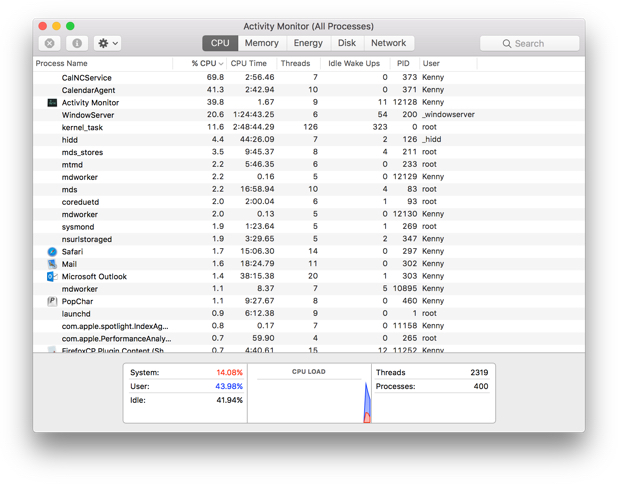
Mac Shortcut For Task Manager
This is the Mac equivalent to pressing Ctrl + Alt + Escape to open the Task Manager on Windows. Force Quit The Current Application: Press Command + Shift + Option + Escape and hold down the keys for three seconds. Your Mac will force-close the front-most application, which is useful if it isn’t responding and you can’t even open the Force Quit Applications window. If you have just switched from Windows to Mac you may find out that most key shortcuts don’t work on Mac. For example, when an application crashes on Windows, a command Ctrl-Shift-Esc is used to bring up the Task Manager and quit the offending process.
If you have just switched from Windows to Mac you may find out that most key shortcuts don’t work on Mac. For example, when an application crashes on Windows, a command Ctrl-Shift-Esc is used to bring up the Task Manager and quit the offending process. What about a Mac? How does one kill such processes whenever Safari or Mail crashes and locks the machine up?
You can download the video player for free from their official website. The Video player is full of surprises and features. Which is best video player for mac pro. The Media Player Classic can also be used as DVB Player.
One of the methods is to click the Dock icon and select “Force quit.” But what do you do when the Dock won’t pop up? This blog post will explain the Mac equivalent of Task Manager and how to view running processes in macOS. How to open Task Manager on Mac? Task Manager = Activity Monitor Firstly, we would like to mention that the equivalent of Task Manager on Mac is Activity Monitor. Activity Monitor lets you easily view active processes that are running on your Mac, manage them, and even quit tasks or applications. Often even one application or running process can significantly degrade your Mac’s performance.
Linux Mac OS X. Oct 11, 2014. The Eclipse Classic provides superior Java editing with incremental compilation, the. A 64 Bit version of Windows, choose Windows 64 Bit next to Eclipse IDE for. Download eclipse ee for windows. Eclipse Helios (3.6 RC4) Packages for.
How do we identify such a program among a dozen apps running in the background? Find Activity Monitor in Launchpad. On Activity Monitor you can monitor many parameters of the system such as: • CPU load • RAM memory • Energy used • Disk space • Network monitoring You will instantly be able to identify the process that is consuming too many resources of macOS. How can you Force Quit on Mac?
A list of running programs can be also viewed in a “Force Quit” dialogue. This can be accessed by a simple keyboard shortcut Command + Option + Escape, or through the Menu → Force Quit.
Use Terminal* to view a list of running processes. For those who prefer working with Terminal, there are simple commands to view the list of running programs. Just open the Terminal and type only one word: Top If you need to view a list of the most voracious applications that consume the most bytes, sort them by CPU: top -o cpu Sort applications by memory usage: top -p size *Read in our previous article.
Monitor Memory Usage with Memory Cleaner Memory Cleaner is a free utility to clear inactive RAM memory. With the app you can get access to memory usage right from the menu bar. The app also allows you to kill or stop running applications. As you can see, there are various equivalents of Task Manager on Mac. Activity Monitor is one of them.
It is built-in utility that is used by most Mac users. However, if you want to monitor RAM memory usage and clear inactive RAM, we would recommend below. See more • Prev: • Back: • Next: Related entries.
Ctrl + Shift + Escape is the Windows shortcut that directly opens the Task Manager with no additional input, although the more commonly recognized shortcut Ctrl + Alt + Delete also provides access to the Task Manager by presenting it on a menu alongside other options such as the ability to log off or shut down.